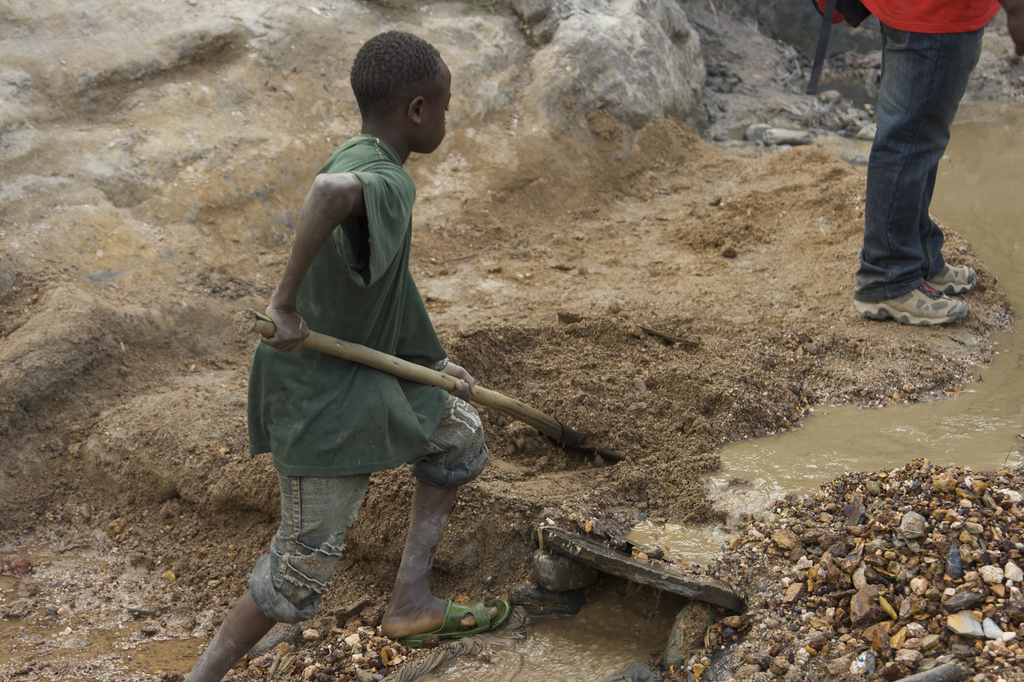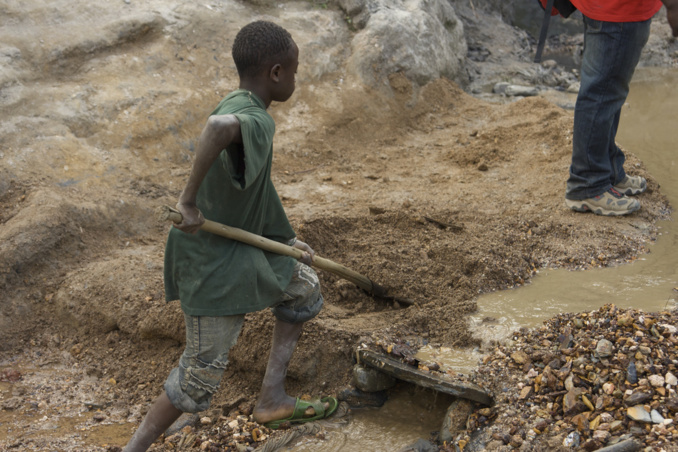The consulting company CRU Group stated that by 2021 there will be almost four and a half million electric cars and hybrid cars in the world (there were a little more than a million of them in 2016). By 2040, according to the International Energy Agency, the number of electric vehicles in the world will grow to a minimum of 40 million.
Like other electronics, modern electric vehicles operate on lithium-ion batteries, for which cobalt is needed. At the same time, a battery in an electric car, of course, is much larger than that in a smartphone; its weight can exceed 500 kilograms. At that, a smartphone battery requires 10 grams of cobalt, but an electric car battery consumes an average of about 20 kilograms.
Investors had realized that automakers will soon need more cobalt - for example, Volkswagen wants to sell 400 thousand electric vehicles in two years and a half million - in seven years. After that, money began to flow into the cobalt. Thanks to investors' interest, cobalt began to rapidly rise in price. For two years, the price of a ton of cobalt on the London Stock Exchange of non-ferrous metals has more than tripled, from 22.5 thousand dollars to 75 thousand.
Every year about 120 thousand tons of cobalt are mined in the world. 60 percent of the production falls on the Democratic Republic of the Congo (DRC), one of the poorest and most corrupt countries in the world. The per capita GDP in the DRC is $ 466. At the same time, the country is ranked 156th out of 176 in the perception of corruption rating.
The unstable economy of the Congo forces experts to fear for the extraction of cobalt in the country; high risks also raise the price of metal. Cobalt reserves are found in other countries, but they are small: for example, Canada accounts for six percent of production, Australia – for four percent.
A significant part of the metal is mined in self-made mines in the south of the country. The miners work in narrow and long underground tunnels, using the simplest tools like a hammer; they handle and wash the rock by hand. Workers of self-made Congolese mines do not even wear basic protective equipment, although inhaling cobalt dust causes heart and lung diseases.
According to Amnesty International, there are 110 to 150 thousand miners in the Congo. UNICEF data for 2014 shows that about 40,000 of them were children (after cobalt began to rise in price, even more children went down to mines, says Amnesty International). Some of them are not older than four years old. The biggest part of them those are of school age, whose parents cannot pay for their studies. The working day of a child lasts an average of 12 hours, daily earnings fluctuate around one or two dollars. "This is one of the worst forms of child labor [in terms of harm to the health and safety of children]," Amnesty International believes.
source: thetimes.co.uk
Like other electronics, modern electric vehicles operate on lithium-ion batteries, for which cobalt is needed. At the same time, a battery in an electric car, of course, is much larger than that in a smartphone; its weight can exceed 500 kilograms. At that, a smartphone battery requires 10 grams of cobalt, but an electric car battery consumes an average of about 20 kilograms.
Investors had realized that automakers will soon need more cobalt - for example, Volkswagen wants to sell 400 thousand electric vehicles in two years and a half million - in seven years. After that, money began to flow into the cobalt. Thanks to investors' interest, cobalt began to rapidly rise in price. For two years, the price of a ton of cobalt on the London Stock Exchange of non-ferrous metals has more than tripled, from 22.5 thousand dollars to 75 thousand.
Every year about 120 thousand tons of cobalt are mined in the world. 60 percent of the production falls on the Democratic Republic of the Congo (DRC), one of the poorest and most corrupt countries in the world. The per capita GDP in the DRC is $ 466. At the same time, the country is ranked 156th out of 176 in the perception of corruption rating.
The unstable economy of the Congo forces experts to fear for the extraction of cobalt in the country; high risks also raise the price of metal. Cobalt reserves are found in other countries, but they are small: for example, Canada accounts for six percent of production, Australia – for four percent.
A significant part of the metal is mined in self-made mines in the south of the country. The miners work in narrow and long underground tunnels, using the simplest tools like a hammer; they handle and wash the rock by hand. Workers of self-made Congolese mines do not even wear basic protective equipment, although inhaling cobalt dust causes heart and lung diseases.
According to Amnesty International, there are 110 to 150 thousand miners in the Congo. UNICEF data for 2014 shows that about 40,000 of them were children (after cobalt began to rise in price, even more children went down to mines, says Amnesty International). Some of them are not older than four years old. The biggest part of them those are of school age, whose parents cannot pay for their studies. The working day of a child lasts an average of 12 hours, daily earnings fluctuate around one or two dollars. "This is one of the worst forms of child labor [in terms of harm to the health and safety of children]," Amnesty International believes.
source: thetimes.co.uk



















